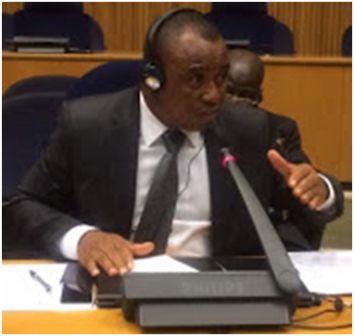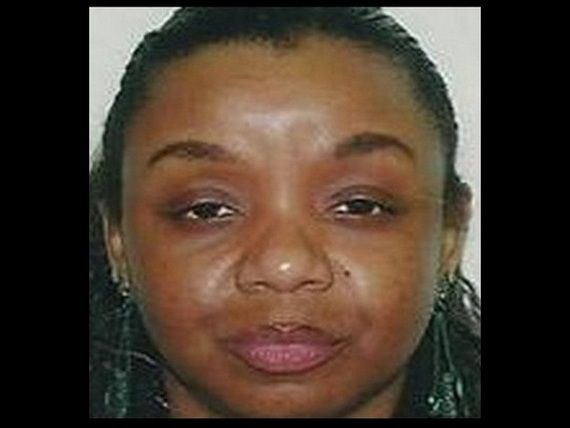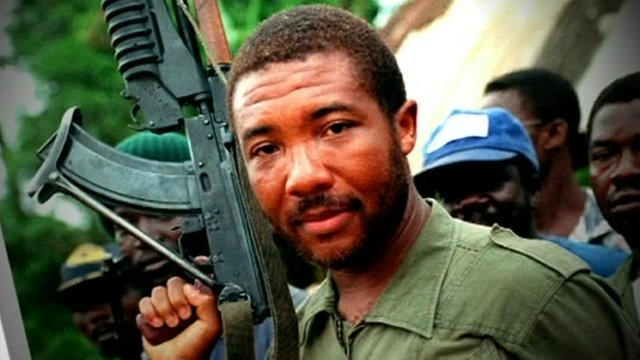Judgment in the Charles Taylor Trial: Final Chance to Determine Responsibility for the January 1999 Attack on Freetown
When Special Court for Sierra Leone Judges (SCSL) in The Hague deliver their final judgment in the trial of former Liberian President Charles Taylor sometime this year, it could be the final chance to determine responsibility for the January 1999 rebel attack on Sierra Leone’s capital Freetown. Taylor is on trial for allegedly supporting Revolutionary United Front (RUF) rebels in Sierra Leone, a rebel group which attacked the country in March 1991, a war that would last for eleven years. (Photo: Charles Taylor in court)
The January 1999 attack on Freetown occupies huge significance in the history of the conflict in Sierra Leone. For many, this event truly brought the world’s attention to an otherwise forgotten conflict. Pictures on televisions of babies whose arms were amputated by rebel forces while under the protection of their parents showed the world that something serious was happening in that tiny West African nation. The January 1999 invasion also convinced the government of Sierra Leone that a military solution to the conflict was almost impossible. There was a need to negotiate with the rebels, thus leading to the signing of the 1999 Peace Agreement in Lome, Togo. This eventually led to the release of RUF leader Foday Sankoh, who had been incarcerated since 1997.
The scars of this attack exist in Freetown until this day. Amputees still roam the streets of Freetown as beggars, burnt houses still remain, and women still need medical help as a result of being raped by rebel forces.
This year, on January 6, I participated in radio programs to commemorate the events of that fateful day in 1999. Many civilians, including victims of the events of that day called into the radio programs and made contributions. A woman recounted how rebel forces poured petrol and set fire on her son even when she begged them to spare his life. She cried as she recounted her experience. A man called and explained how she lost family members on that day. Another called and spoke about how rebel forces burnt down his house, leaving him homeless. In the streets of Freetown, an elderly amputee wept as he explained how the rebels asked him to lay down his hand before it was chopped off by a rebel young enough to be his grandson.
Sierra Leoneans agree on the nature of the crimes committed on that day, but they cannot seem to agree on who committed these heinous acts.
Eleven years after this attack, debate is still hot among Sierra Leoneans as to who was responsible for the carnage meted out on innocent civilians in Freetown. To some people, the invasion was the work of RUF rebels, to others, it was the work of the Armed Forces Revolutionary Council (AFRC), a group of Sierra Leonean soldiers, who in 1997 overthrew the elected government of Sierra Leone and formed a junta government together with RUF rebels. When the AFRC junta was forced out of power by West African peacekeepers in 1998, they retreated to Sierra Leone’s provincial towns. These renegade soldiers, some believe, were the ones who came back to Freetown on that fateful day.
There is still a school of thought with the belief that this invasion was a combined attack by the AFRC and RUF as part of a joint criminal enterprise to destabilize and take control of the territory of Sierra Leone. An influential voice among this group is the Office of the Prosecutor (OTP) of the Special Court for Sierra Leone.
During the trials at the SCSL, Prosecutors have led evidence in support their position. Through several witnesses, first in the AFRC and RUF trials in Freetown, and reechoed in the Taylor trial in The Hague, Prosecutors have maintained that this operation was a combined AFRC-RUF affair, with support from that man now on trial in The Hague, Charles Taylor.
However, two sets of judges in the AFRC and RUF trials ruled in 2007 and 2008 respectively that the 1999 attack on Freetown was an AFRC affair and that the RUF had no involvement in it. The judges who presided over the AFRC trial now do the same in the Taylor trial. Despite these decisions, prosecutors have not given up. With renewed vigor, they have led witnesses who have testified in the Taylor trial that this was a combined AFRC-RUF attack as part of a joint criminal enterprise in which Taylor played a vital role. They allege that Taylor helped plan and finance this operation with supplies of arms and ammunition to RUF rebels. Proof that the RUF were involved in this attack could have a significant impact on the Taylor trial as an indirect way of linking Taylor to the atrocities of January 1999. Such is the importance put on this evidence that the Prosecution had as their final witness against Taylor, a 59 year old resident of Freetown, whose two arms were amputated in Freetown in January 1999.
Defense lawyers for Taylor on their part have made all efforts to put this attack at the door step of the AFRC. When former signal commander for the RUF, Mohamed B. Kabbah testified as a prosecution witness against Taylor in September 2008, defense counsel Courtenay Griffiths subjected him to such rigorous cross-examination that he was forced to say that the RUF were not involved in the attack on Freetown. Kabbah had, however, earlier said that Taylor called RUF commander Sam Bockarie to congratulate the RUF for invading Freetown. After Kabbah’s cross-examination, Taylor gave Griffiths an open handshake in court, a sign of saying “well done.”
Defense lawyers also brought in convicted former interim leader of the RUF, Issa Hassan Sesay, now serving a 52 year jail term for his role in the Sierra Leone conflict, to testify on behalf of Taylor. In his testimony, Sesay said that the RUF was not involved in the January 1999 invasion of Freetown. His comment in this regard prompted huge condemnation from Sierra Leoneans.
As things stand, even with the judgments in the AFRC and RUF, in which it was determined that the 1999 attack on Freetown was an AFRC, not an RUF affair, the debate still remains among many Sierra Leoneans. If the Judges in the Taylor trial become swayed by new evidence about those events some 11 years ago, they will be at liberty to change their previous decision and apportion responsibility to the RUF, and by extension Taylor, if it is proved that he was involved in a joint criminal enterprise with the rebels. If Prosecutors have shown no new evidence that adds to those presented in the AFRC and RUF cases, then the Judges might just stick to their original judgment – that it was an AFRC affair.
This all means that as far as responsibility for the 1999 attack on Freetown is concerned, the jury is still out, and the Taylor trial might well be our very last chance to determine responsibility for those events, events that residents of Freetown will not forget in a hurry.
By Alpha Sesay
Stay with Sierra Express Media, for your trusted place in news!
© 2011, https:. All rights reserved.






